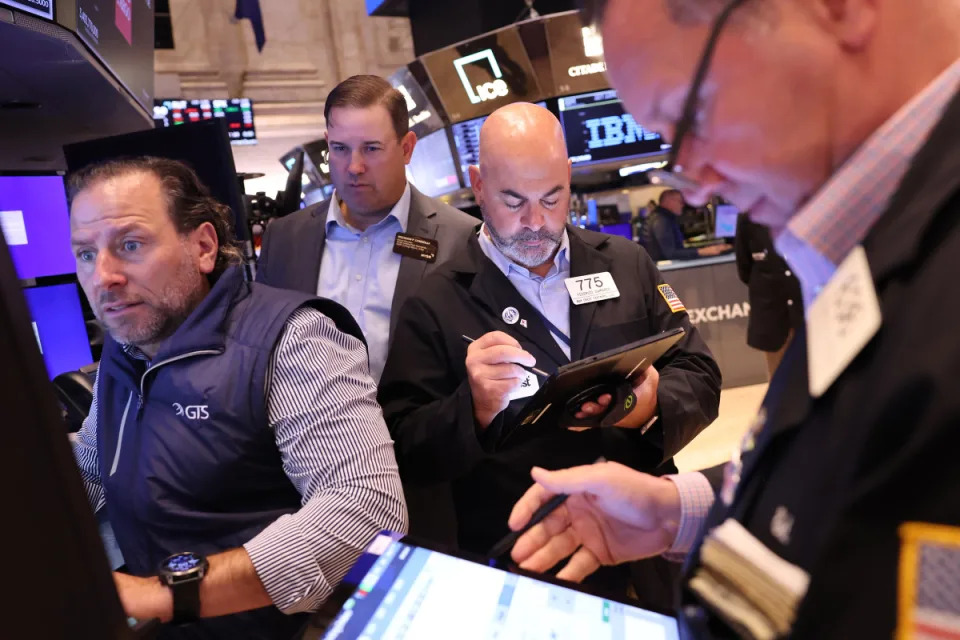News
Stock market gains in 2025 may hinge on one major indicator
Twenty-twenty-five is here, finally, and it's time to talk about the January Barometer.
The concept of the barometer is simple: If stocks are higher in January, they should be higher for the year. Likewise, if stocks are lower in January, they'll be lower for the year.
💰💸 Don’t miss the move: SIGN UP for TheStreet’s FREE Daily newsletter 💰💸
It works most of the time. The Stock Trader's Almanac says it's been right 84% of the time since 1950.
Related: Gangbuster S&P 500 returns depend on one crucial thing in 2025
It worked in 2023 and 2024. The S&P 500 was up 6.2% in January 2023 and ended the year up 24.3%. In 2024 the S&P 500 finished January with a relatively modest 1.02% gain. The gain for the year: 23.3%.
And it worked in a bad 2022 market: The index started the year down 5.3% and ended the year down 19.44%. Thank the Federal Reserve's campaign to bring down inflation.
How the barometer got its name
The barometer got its name in 1972 from the late Yale Hirsch, founder of the Stock Trader's Almanac, a widely read investment guide. He'd been involved in investment research for years and, armed with a background in music, discerned the pattern.
It's not infallible. It does not guide markets. It will not tell you to buy Apple and Walmart and sell JP Morgan Chase and Tesla. And the patterns themselves don't operate in a vacuum.
It does suggest — based on history — the environments an investor might face in making a buy or sell decision.
Consider 2008, when the January Barometer was painfully and spectacularly right. In January, the S&P 500 fell 6.1%, the Dow Jones Industrial Average slipped 4.6%, and the Nasdaq Composite slumped 9.9%.
At the end of the year, the S&P left investors with a 38.5% decline. The Dow had sagged 33%, and the Nasdaq had tumbled 40.5%. The Great Recession had disrupted everything.
How could that big drop happen when all three indexes had been higher at the start of 2007?

The answer is that stocks were up for much of 2007, but pressures erupted in the summer, with deep problems in housing — overbuilding, prices out of control, and mortgages suddenly souring.
The major stock indexes hit record highs in October 2007 and then fell hard. The S&P's high came on Oct. 9, followed by an 8.1% decline by Dec. 31.
And then came 2008, and a bad situation got much, much worse.
Of late, because of the Covid-19 pandemic, a big inflation surge, economic gyrations, dangerous political problems in the Middle East and Russia and fraught U.S. politics, the January Barometer has been a bit less accurate: Correct five of the past nine years, or a 55% win rate. But its fans still pay attention to it.
Yes, the January Barometer has critics
People who study markets profess to pooh-pooh the barometer, especially if an investor uses it to time the stock market. Better, they say, to use the barometer as a way to gauge the market's health.
Of course, in part because the barometer doesn't operate in a vacuum, one should note some other issues.
More stocks’ performance in 2024
The year 2020 is the perfect example. January saw the S&P 500 fall 0.16%. Not much. But then the Covid-19 pandemic hit. By the end of March, the S&P 500 was down 20%.
But vaccines worked, weather improved, the pandemic eased and people began living their lives again, spending money and buying. By year's end, the S&P 500 was up 16.3%.
The S&P 500 and the Dow slipped in January 2021 and ended the year up 26.9% and 18.7%, respectively.
What else the Almanac tells investors
So, the index lives on, partly because thousands of investors are fans of the Stock Trader's Almanac, updated annually by Jeffrey Hirsch, son of Yale. Its 200-odd pages are a trove of concentrated market data and trivia.
The almanac has contributed two more bits of stock-market lore that people follow.
Related: Veteran fund manager delivers alarming S&P 500 forecast

